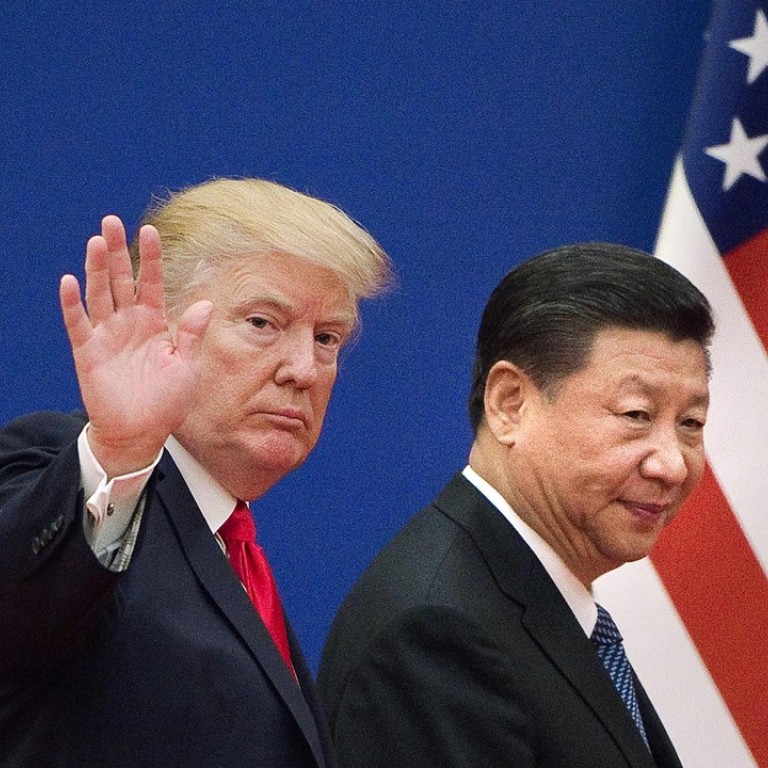
The trade war is here to stay: both China and the US are gearing up for a long, hard fight
Neal Kimberley says not only is the gulf of disagreement too wide to bridge, but neither side is focused on finding a fix: US attention is trained on the larger picture of China’s rise, while Beijing is working to reflate its economy to offset the impact of the trade war
President Donald Trump asserts strongly that his interest is in securing “fair” trade deals, but his words seem to indicate that he is a mercantilist who believes that running trade deficits, by definition, weakens the US.
“We are fixing one-sided trade deals that have stolen American jobs and drained American wealth, just taken away our wealth. It’s like candy from a baby, they took our money, they took our jobs. They took everything. They took our dignity,” Trump said on Friday at a rally in Missouri.
More specifically, “China last year took US$500 billion from our country – 500 billion, not million, 500 billion.” He added: “We have rebuilt China. We have given them such wealth.”
Watch: Escalating trade war makes European firms nervous
At its heart, though, this trade war is surely just one aspect of a much deeper problem. Although the emergence of China as an inexpensive manufacturing base has mightily benefited US consumers and many US companies, Washington has become increasingly wary about what China’s rise implies for America’s global influence. The possibility that China’s economy could grow in size to exceed that of the US is a case in point.
As Graham Allison, of the Harvard Kennedy School, wrote last year in Foreign Policy magazine, one of the lessons of the cold war was that “domestic performance is decisive”.
“Had the Soviet economy overtaken that of the US by the 1980s, as some economists predicted, Moscow could have consolidated a position of hegemony. Instead, free markets and free societies won out,” Allison wrote. The “vital question” for the US-China rivalry today is whether President Xi Jinping’s “Leninist-Mandarin authoritarian government and economy proves superior to American capitalism and democracy”.
A combination of that kind of strategic unease and Trump’s mercantilist approach does no leave much room for a new trade bilateral relationship to be cemented any time soon.
Watch: Chinese people hope for a swift end to the trade war
Li also explained how China “will more proactively leverage on fiscal policy” in boosting domestic demand and restructuring, by further cutting taxes and fees.
“Given that consumption has now become the primary driver of China’s economic growth, we need to increase household incomes through multiple channels to expand the spending power of our consumers,” Li said, adding that the new personal income tax law, to be implemented soon, would notably reduce tax burdens on individuals.
These are domestic reflationary measures that will, even if they were long in the planning, be a timely policy offset to the deterioration in China-US trade relations.

Given the size of China’s economy, US bank Morgan Stanley, in an analysis last week, even feels such measures will have a global reflationary impact. “China has turned from a capital exporter into a funds importer as domestic financial institutions (which used to fund expansionary programmes) have sharply reduced their lending,” it said. “As a result, China’s reflation programme may have a bigger impact on the global cost of capital than in the past, explaining higher [developed market] bond yields.”
Additional, if marginal, upward pressure on US yields could also materialise if markets take the view that there should be some paring back of Chinese demand for US government paper related to the deterioration in China-US trade relations.
The prospect of Chinese domestic reflation might also be felt in the commodity space. The price of copper on the Shanghai Futures Exchange notably rose above 50,000 yuan (US$7,300) on Friday for the first time in six weeks.
There’s no quick fix to be had in the China-US trade war. Markets have to recalibrate to encompass that reality.
Neal Kimberley is a commentator on macroeconomics and financial markets

